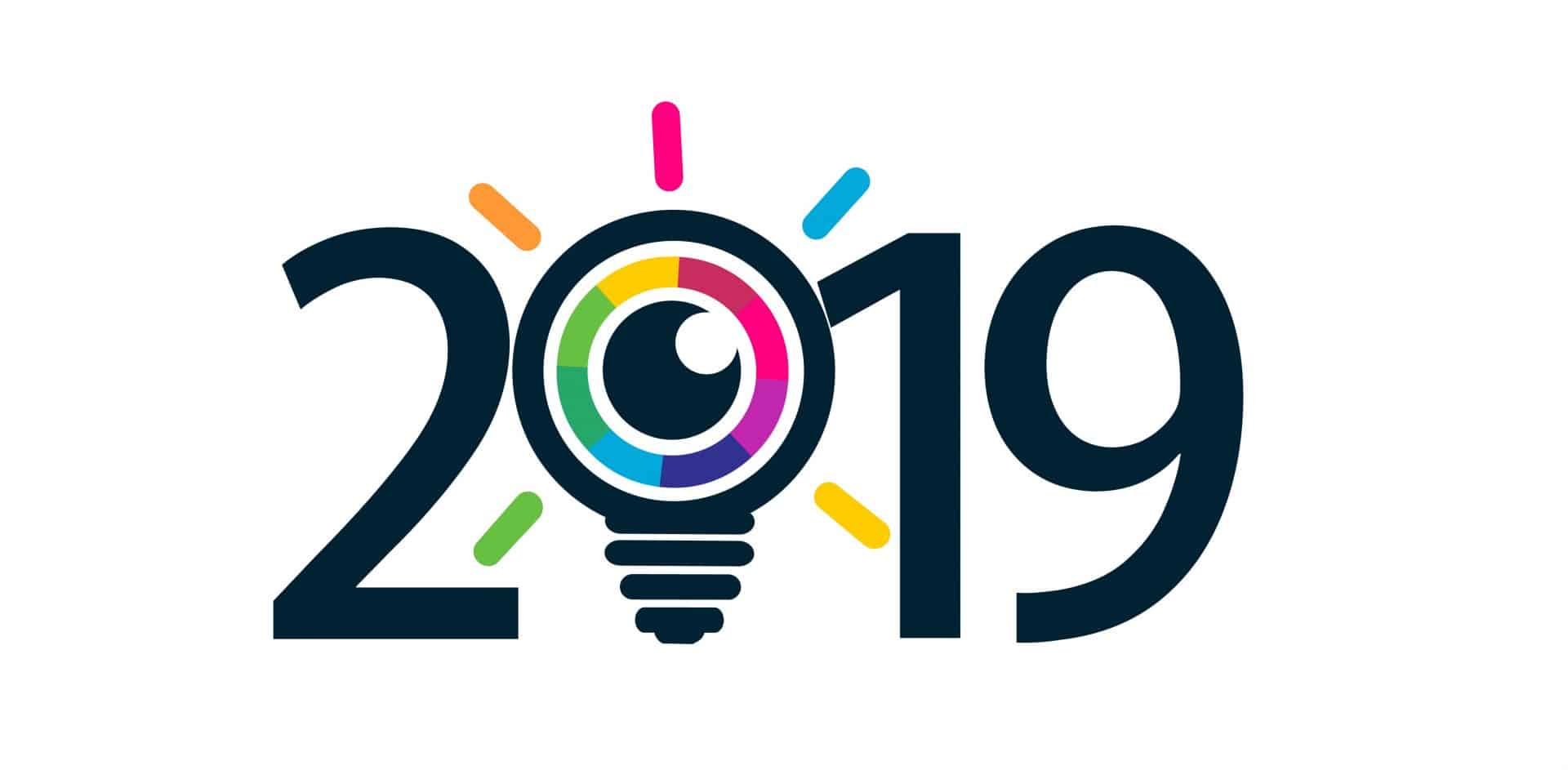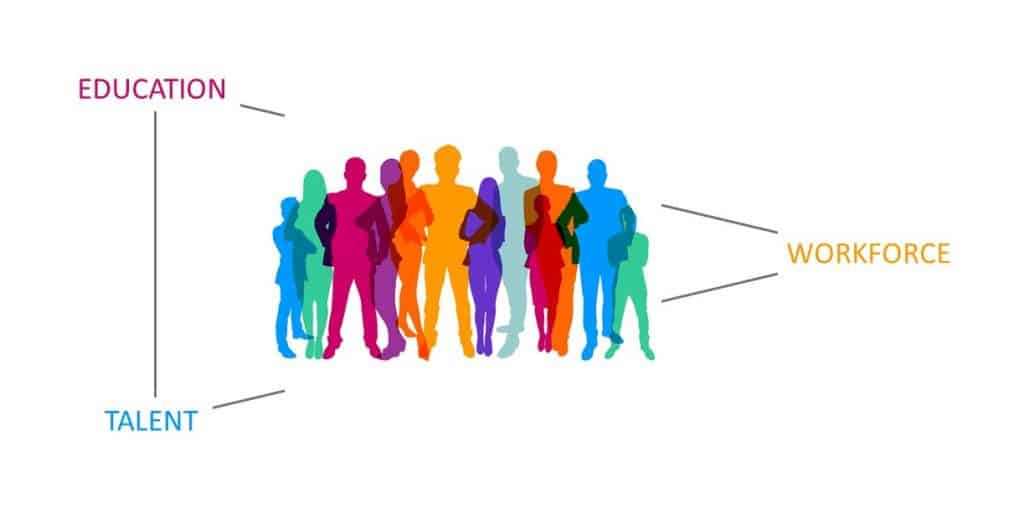
At The Renaissance Network (TRN), we have been fortunate enough to remain at the forefront of this industry for almost 25 years, and we are enthusiastic about sharing some insights from 2019.
Triangulation of education, talent and workforce planning
The intersection of education and workforce development has moved beyond a trend and become foundational for growing companies. Preparing all segments of the population for work is exceedingly important, given the historically low unemployment rate. Companies need every skilled worker they can get! People of all economic means need access to opportunities to learn new skills and earn appropriate degrees; increased access to education could dramatically increase the size of the relevant workforce.

Triangulation of education, talent and workforce planning
PWC reports 79% of CEO’s say a lack of key skills is threatening the future growth of their organizations. The world economy is relying on students of all ages to successfully learn new skills. PWC is looking at workforce development as one of the leading issues that needs to be solved for its clients. “Upskilling 2.0” – as PWC calls it – is an initiative to help organizations transform their current employees’ skillsets to meet the future needs of their businesses. These organizations will increasingly utilize their current staff for growth, rather than only looking outside for new skills in an already scarce labor market. This is where the intersection of education and workforce development meet and talent development becomes its own mission.
Recruiting is a digital experience and candidates and companies are becoming more proficient
Many companies understand that talent acquisition is one of the most important functions for sustained commercial success. Therefore, these same companies invest substantial resources to increase the success of their recruiting functions. New technology is emerging daily and focused on aiding both companies and candidates throughout the recruiting journey. These technologies are developed to augment – rather than replace – the time people spend on recruiting. Two decades ago, when Monster.com and then LinkedIn emerged as the go-to sites to connect, recruit, and find jobs, many recruiters were nervous these sites would take away their business. Instead, the opposite happened. These technologies have become tools that we recruiters use to increase our skills and gain access to both talent and hiring companies that were previously difficult to engage.
With the rise of artificial intelligence and automation, there are multiple recruiting tools that can assist (not replace) people with talent acquisition. For example, we have implemented the use of bots to better engage with passive candidates who, although they are viewing TRN job advertisements, may or may not be interested in making the first move toward a new career. This automation technology is certainly not replacing our intensive personalized approach, but it is increasing our ability to authentically capture the interest of an otherwise hard to find candidate.
Lowest unemployment rate in 50 years
The low unemployment rate continues to impact companies’ ability to grow the top of the recruiting funnel. Having a strong selection of qualified candidates to choose from and evaluate is imperative to making a good hire, but the extreme scarcity of talent makes this quite challenging. We continue to see demand increasing and supply decreasing – a years’ long trend that continues to hamstring many companies from growing at their desired pace. One of the trends we are seeing is the upskilling scenario, where companies take their existing employees and retrain them for new skills that will be needed in the future. Upskilling can prevent staff turnover and decrease associated hiring costs.
Another way companies are addressing the low unemployment rate is by hiring top-performers from other industries and training them on their specific industry (it must be highlighted that industry knowledge is still a frequently desired trait component for hiring managers). Many experience-based skills like sales, marketing, finance and general management can be used across industries. For example, hiring for an EdTech salesperson role with a candidate who has successfully sold healthcare software can make sense, as the salesperson most likely possesses transferable skills. Selling technology into healthcare brings similar challenges as selling into EdTech – strict regulations, government funding and committee buying. A salesperson who has been successful in an analogous industry can often bridge the gap to a new one. The companies that are willing to get creative during this dramatically low unemployment scenario are the ones most likely to gain an edge over their competition.
Diversity planning as a developing capability
Increasing workforce diversity is prevalent with most of our clients. The definition of an ideal workforce is different for each company, and it is imperative that our partners identify what their diversity objectives are before implementing changes in their recruiting and hiring practices. For instance, a company’s diversity mandate may include increasing the number of females or people of varied ethnic backgrounds, but these specific targets cannot be presumed. TRN has implemented a question in our client development process that helps us identify each company’s intentions. Asking “what are your diversity goals?” has become a standard practice for our client interactions.
Once the goals are outlined, a foundational diversity plan should be implemented – not just a hope that you will attract diverse candidates. While attending a 2019 national conference, an organization’s representative shared their company’s plan for consistently developing a diverse workforce. By focusing their internship program on diverse universities, they attracted broad, young talent early in these new graduates’ careers. Putting a strategy in place to proactively build and retain diverse teams is possible, effective, and critical.
Hiring in 2020
Helping to drive growth through talent acquisition within the world of education and learning is both exciting and challenging. The scarcity of talent and sophistication of organizations continues to make this industry exhilarating and demanding. We are enthusiastic about the future, especially considering new technology, the potential of increasing employee diversity, and the intersection of education and workforce development.



